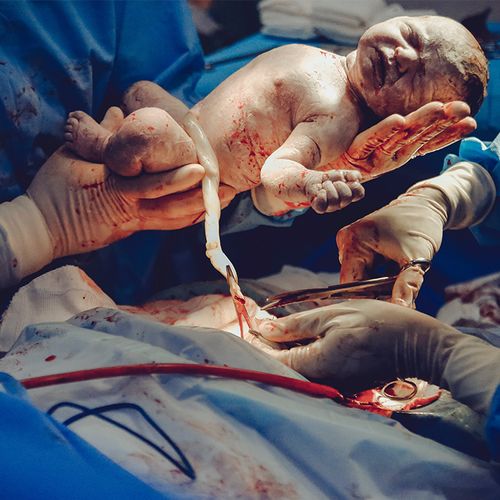Many women who've had a Cesarean section may be candidates for vaginal birth in future pregnancies, say new guidelines from the American College of Obstetricians and Gynecologists.
"These guidelines emphasize again that a trial of labor after Cesarean is an important option for most women," said one of the authors of the new guidelines, Jeffrey Ecker, MD, a maternal-fetal medicine specialist at Massachusetts General Hospital in Boston.
Background
Years ago, experts believed that once a woman had undergone a Cesarean birth, she would have to deliver any subsequent pregnancies with a C-section as well. But with changes in surgical procedures and growing evidence to support the possibility of a vaginal birth after a Cesarean (VBAC), attitudes began to shift.
However, in the 1980s and 1990s, as the VBAC rate increased, so did complications related to the procedure. Because of concern over complications and possible legal consequences, the VBAC rate dropped dramatically, from 28.3% of deliveries in 1996 to 8.5% in 2006. But repeat C-sections also have a risk of complications for mother and baby, the authors of the guidelines noted.
Currently, nearly one in three mothers delivers by Cesarean in the United States, according to the study.
New Evidence Supports VBAC
More recent studies have supported the idea that many women can successfully deliver vaginally after having had a Cesarean, explained William Grobman, MD, another author of the new guidelines and an associate professor of obstetrics and gynecology at Northwestern University's Feinberg School of Medicine in Chicago. A National Institutes of Health panel came to the same conclusion and said that a Cesarean delivery in the past doesn't mean a woman must automatically have a Cesarean in subsequent pregnancies.
The new guidelines recommend counseling women who've had one Cesarean birth using a horizontal incision low in the uterus (low transverse incision) that they are candidates for VBAC, and offering the option of a trial of labor so they can attempt to deliver vaginally.
Between 60% and 80% of women who attempt VBAC have a successful vaginal delivery, according to the guidelines. Dr. Grobman said that for some women, the success rates may be much higher.
The guidelines, published in Obstetrics & Gynecology, suggest that the following women may also be candidates for a trial of labor after a Cesarean...
- Women who've had two previous C-sections using a low transverse incision.
- Women who've had a C-section with a low transverse incision who are currently pregnant with twins.
- Women who've had a Cesarean delivery but don't know if they had a low transverse incision.
Women Who Should Not Have VBAC
Some women definitely aren't candidates for VBAC. These include women who've had a vertical incision on the uterus or serious pregnancy complications, such as placenta previa a condition in which the placenta grows in the lowest part of the uterus and covers the opening to the cervix), said Dr. Grobman.
Expert Reaction
"For some women, a VBAC remains an inappropriate choice. But for many, if not most women, choosing a trial of labor when you've had a C-section is an appropriate choice," said Dr. Ecker.
The guideline authors hope that women and their health care providers will feel a "sense of shared decision-making," Dr. Grobman said. "Rather than provide a directive of you can or you can't do this, doctors need to provide information about the potential risks and successes and let women have autonomy to make their own decision."
Peter Bernstein, MD, MPH, a professor of clinical obstetrics, gynecology and women's health at the Montefiore Medical Center in New York City, said he's very pleased to see the new guidelines. "Over the last 10 years or so, the pendulum has been swinging too far away from VBAC, and I think they're trying to swing the pendulum back the other way to a more reasonable position and making it available to women who are interested in it," he said.
